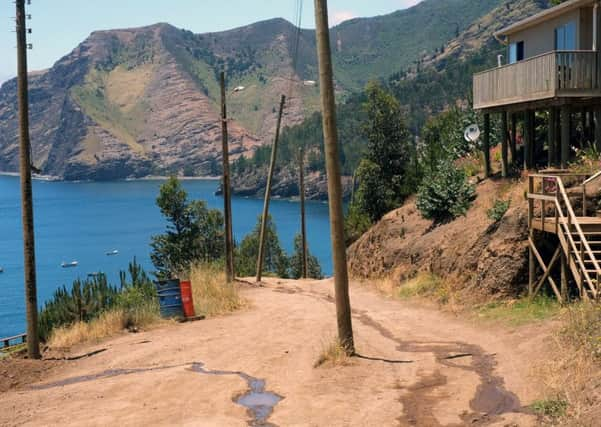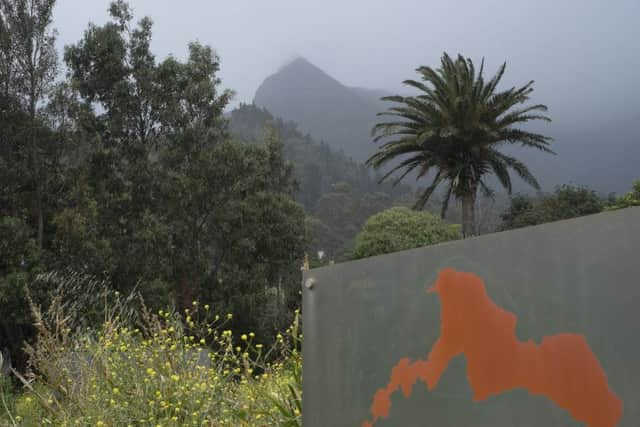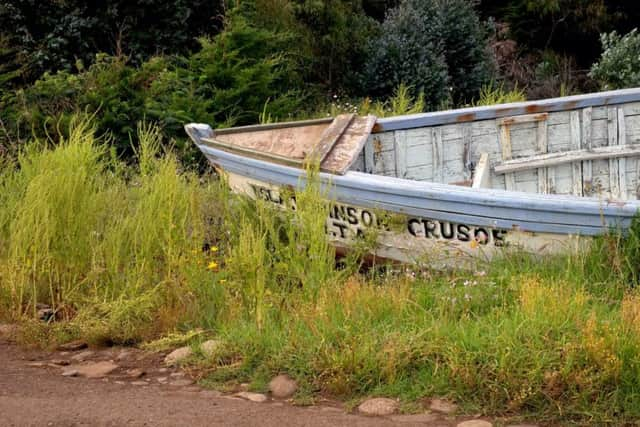Robinson Crusoe at 300: Artist travels from Fife to Chile in search of character’s Scottish links


Several years ago, while browsing in a second-hand shop in South Africa, I came across Robinson, an early 20th Century German children’s book. It included approximately 30 illustrations, engravings from original drawings by Willy Planck. One illustration in particular attracted me and I bought the book on a just-in-case basis, in much the same way that I had acquired vintage illustration sources for earlier projects. True to form, nothing much happened for a while other than occasionally looking through the book and thinking about how I might use this image of two men stoking a beach fire as a signal to a distant ship.
Perhaps someone told me about Alexander Selkirk, the Scottish privateer and Royal Navy officer who inspired Daniel Defoe’s Robinson Crusoe after being marooned on an uninhabited island off the coast of Chile for four years, or perhaps I encountered his story online. Early in 2017 I visited Lower Largo, where he was born in 1676, made a few black and white photographs and began to focus on how a project might develop to include some of Planck’s illustrations. On a subsequent visit I stayed at the Robinson Crusoe Hotel and visited Kirkcaldy Galleries.
Advertisement
Hide AdAdvertisement
Hide AdSoon afterwards I got in touch with Diana Sykes, Director of Fife Contemporary.


Diana responded enthusiastically to my proposal that we develop a project between Fife and the Chilean island of Más a Tierra (renamed Isla Robinson Crusoe in 1966) where Selkirk had been marooned. I subsequently made several more trips to Largo Bay, at which time a consistent photographic approach emerged – one of looking out to sea with horizons positioned in the middle of each picture.
As I began to read about the tiny Pacific island that links their stories, the slippage between Selkirk and Crusoe assumed greater importance. Some 90 miles west of Más a Tierra another island, Más Afuera, is now called Isla Alejandro Selkirk. And just as Defoe has his castaway marooned far away from Isla Robinson Crusoe, there is no evidence that Selkirk ever set foot on the island that bears his name.
I was determined to visit Isla Robinson Crusoe and planned a trip in December 2017. The journey itself was a challenge – a two hour flight from Santiago on a veteran eight-seater aircraft that made a sharp turn before landing abruptly on a cliff-top strip of tarmac. The transfer to Bahía Padre was via pick-up truck on a steep gravel track with several hairpin bends. Hundreds of noisy sea lions were congregated near the pier from which a small boat then embarked on an hour’s journey, passing tall cliffs en route to San Juan Bautista, the island’s only settlement. The return voyage included a possible shipwreck moment. After repeatedly struggling to disembark in heavy seas, all six passengers boarded the plane wet through.
Isla Robinson Crusoe reminded me of a mountainous Hebridean island but with steeper slopes and an enhanced sense of emptiness and isolation. I spent one day walking the 16km back from the airstrip to the village – a six-hour hike along sometimes vertiginous tracks culminating in a steep ascent and descent over the Mirador de Selkirk, his supposed lookout for passing ships and potential rescue. I would also have liked to walk to Puerto Inglés, site of Selkirk’s cave, but was advised that it would be too dangerous. An alternative would have been to take a boat with an American whose conviction that he will eventually find Lord Anson’s treasure there has brought him back to the island year after year. But time was short, and I already knew that I wanted to base my project around San Juan Bautista.


My work is primarily photographic but is informed by other art forms such as painting, drawing and the introduction of new media associated with the conceptual and feminist art movements of the 1960s and 70s. For Refugio I have combined three different forms of image production that reflect different eras of representation – digital colour pictures, silver gelatin photographs and temporary, mixed media works based on illustrations from Robinson. I also wanted to address issues raised by Defoe’s novel regarding representations of colonialism, slavery and cannibalism. As part of my research, I re-read JM Coetzee’s 1986 novel, Foe, a post-colonial interpretation of the Crusoe narrative. With permission I have included two brief extracts in forms commensurate with other aspects of the project.
Visitors will encounter an exhibition in which each element contributes to a fluid if fragmented installation. For some it may be a challenging experience, but hopefully one that encourages open-ended assessment that might resonate beyond the gallery.
Refugio’s timing – 2019 is the 300th anniversary of the publication of Robinson Crusoe – represents an extraordinary stroke of luck on my part. I hope that these images can contribute to debates about how Defoe’s novel might relate to 21st Century stories of rescue, migration and settlement. n
Roger Palmer – Refugio, after Selkirk after Crusoe is at Kirkcaldy Galleries from today until 23 June, https://onfife.com/venues/kirkcaldy-galleries